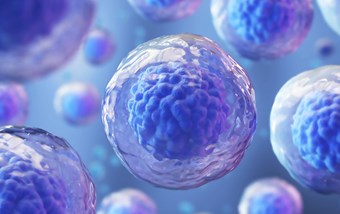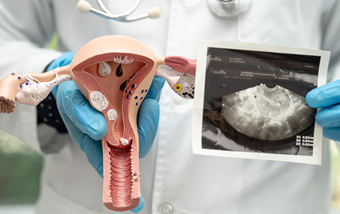When it comes to fertility treatments like IVF, understanding the role of ovarian follicles can allow a deeper understanding of treatment and what factors impact a successful outcome. ovarian follicles are the compartments within the ovaries that contain eggs. These follicles play a vital role in the conception process, particularly in IVF treatments. In this blog we delve into the role of ovarian follicles and their significance
What are ovarian follicles?
Ovarian follicles are structures within the ovaries that house developing eggs. Each follicle contains an egg in development, also known as an oocyte, surrounded by cells that nourish and support its growth. The number and quality of ovarian follicles are key factors in fertility for those with female reproductive organs.
Why are ovarian follicles important for IVF
In IVF treatments, fertility medications are used to stimulate the growth of several ovarian follicles, aiming at growing and maturing multiple eggs. These eggs are then retrieved under sedation, fertilised with sperms in a the lab, and the resulting embryos are monitored as they grow. One of the resulting embryos is transferred to the uterus when ready.
The number of follicles seen on ultrasound scan may be an indication of your ovarian reserve and used a guide for the consultants to anticipate your response to treatment and tailor your medications to your biological needs.
At abc ivf, we prioritise the quality of the eggs over their number, thereby achieving high success rates while taking into consideration of the safety of the patient and focusing on the eggs that are more likely to result in pregnancy.
Why are the different types of follicles?
Throughout your cycle your follicles will develop through different stages:
Primordial follicles: These are the smallest form of ovarian follicles, containing a primary oocyte surrounded by a single layer of granulosa cells. Primordial follicles are the primary store of developing follicles in the ovary. They are too small to be detected on ultrasound scans.
Antral follicles: Antral follicles are more advanced structures with an antrum or fluid-filled cavity. They are considered to be the most responsive to hormonal stimulation, are visible on ultrasound scans and are often monitored during IVF cycles. When you come in for your initial scan, we will assess your antral follicle count as a measure of your fertility potential.
Mature follicles: These follicles are typically larger in size and contain a fully developed egg ready for ovulation. Your medication during IVF aims to develop your follicles to this stage for the best chances of pregnancy. Once your follicles have reached this stage you will visit one of our hub clinics for your egg retrieval. At this point most of the eggs will be ready for fertilisation.
Attend our FREE Online IVF Event with Live Nurse Q&A and get your questions answered by a Fertility Nurse Consultant.
ADDED BONUS - everyone who attends our webinar will receive £50 off an Initial Consultation and Scan at abc ivf.

What is the role of ovarian follicles in IVF?
The quality and quantity of ovarian follicles directly impact IVF success rates. A higher number of follicles can result in a greater number of retrieved eggs, increasing the chances of finding viable embryos for transfer. Additionally, the size and growth of follicles are closely monitored throughout an IVF cycle to determine the optimal timing for egg retrieval.
How many follicles are needed for IVF?
The ideal number of follicles for IVF varies depending on individual factors such as age, ovarian reserve, and prior fertility history. At abc our criteria for treatment specifies an AMH above 10, as an indicator of a good ovarian reserve. Although one egg may result in a pregnancy, fertility specialists typically aim to stimulate the growth of multiple follicles to grow few follicles in order to improve the chances of obtaining healthy eggs for fertilisation.
Can I produce too many follicles?
While a higher number of follicles can enhance the success of IVF, overstimulation of the ovaries can lead to a condition called OHSS (ovarian hyperstimulation syndrome). This potentially serious complication can result from excessive stimulation of follicles, leading to enlarged ovaries and fluid accumulation in the abdominal cavity. At abc ivf, we carefully tailor your medication and closely monitor your follicle growth to reduce the risk of OHSS. Our aim is to achieve the highest pregnancy rate with the lest risk to the mom and baby.
What size follicles are needed for IVF?
During an IVF cycle, follicles are typically monitored via ultrasounds to track their growth. Typically, follicles should reach a size of around 18-20mm before triggering ovulation with a trigger injection for example human chorionic gonadotropin (HCG). Timing is crucial to ensure the maturity of the eggs within the follicles for successful retrieval.
In conclusion, ovarian follicles play a vital role in the IVF process. Understanding the different types of follicles and their role in IVF can help patients better comprehend the complexities of assisted reproductive technologies and optimize their chances of achieving a successful pregnancy. If you're seeking support through your fertility journey, contacting a member of our team can allow us to provide guidance towards your next steps.




